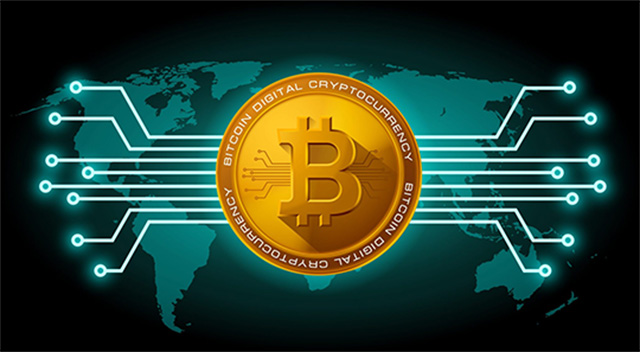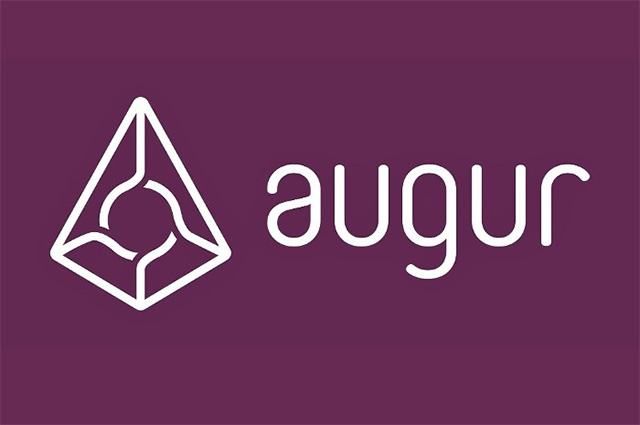What is the decentralized application (DApp)?
With the explosion of electronic money and Blockchain, we are getting more and more terminology in this field and one of them is DApp.
DApp - Decentralized Application is a very new and very broad concept, making many people questionable and confusing.
Want to find the most famous example of DApp?Take a look at Bitcoin's case.Bitcoin is a decentralized decentralized blockchain solution that allows financial transactions to be carried out.Bitcoin has demonstrated that it can effectively solve the problem arising from an unreliable electronic cash system and can expand using peer-to-peer accounting, distribution, and Bitcoin blockchain.Besides being a peer-to-peer electronic system, Bitcoin is also an application where users can interact with each other through computer software.

According to Ethereum White Paper, the decentralization application is divided into 3 main sections:
- Financial applications.These applications provide users with financial management methods, both for fiat and crypto, including savings, inheritance and even some types of comprehensive labor contracts.
- Application to sell finance.It is money-related applications, certainly, but finance is not the focus in how this application works.
- Non-financial applications .Are non-money-related applications, such as identity verification process, voting system, administrative tools or even decentralized file storage systems.
What constitutes a decentralized application?
According to the general theory of General Theory of Decentralized Applications White Paper, an application is only considered a DApp if it meets the following criteria:
- Open Source : The application must be fully open source, run automatically, and there are no organizations or individuals who can control most of its tokens.The application can adjust its protocol to meet the proposed improvements and market feedback but all changes must be determined by user consensus - those DApp shareholders.
- Decentralized (decentralized): Data and application activity profiles must be stored encrypted in a public blockchain, decentralized to avoid centralization, easily becoming vulnerable vulnerabilities.
- Token : The application needs to use an encrypted token (either Bitcoin or an internal token for its own system).This token is necessary to access the app and any valuable contributions of miners and famers will also be rewarded with the app's token.
- Algorithm : The application must create token according to the standard cryptographic algorithm to allow mining through nodes (network nodes).For example, Bitcoin uses the Proof of Work algorithm.
Again, Bitcoin has become the most understandable example of the model of a decentralized application, while there are some disagreements about Bitcoin's development direction.Also according to the White Paper, based on the characteristic of owning a separate blockchain or building on another blockchain, there are three types of DApp:
- Type 1: The decentralized application has its own blockchain (such as Bitcoin and Ethereum).
- Type 2: Application of authorization to use the blockchain of Class 1 decentralized applications. Type 2 DApps are protocols and token to issue necessary to perform its functions.
- Type 3: Application of authorization to use the protocol of type 2 decentralization application. These ADpps are also protocols and have a separate token needed to perform its functions.
To be honest, these concepts are also quite troublesome.To better understand, you can think in the following way:
DApps type 1 is similar to the computer operating systems we use every day (Windows, macOS, Linux .).Meanwhile, DApps type 2 plays the same role as 'versatile software programs' such as word processors (MS Words or spreadsheet programs (MS Excel).
5 notable examples of decentralized applications.

Now that you understand the definitions and characteristics of a DApp, consider some of the following examples.These examples will help you better understand how DApp works, as well as how to use them.In addition, the following examples also illustrate the DApp classification model (three types).
Augur
Augur combines decentralized networks and financial prediction markets to create highly accurate forecasts.This application is built based on the Ethereum blockchain.Currently, Augur allows you to make predictions about events that will take place in the real world, not just limited to financial markets.This application platform turns your predictions into 'shares' that other users can buy or sell.
Augur is a decentralized application of type 2.
Golem
Golem is one of the 'first global markets' for trading and exchanging computing power.The platform itself is a global supercomputer, open source, decentralized that everyone can access.That means that if you have any computing power you don't use, you can lend or rent it to others.In return, the computing power not used on the Golem network will be available for trading as part of a combined package.
Any user can share his computing power to earn Golem token.The first Golem use case is to build GCI, allowing artists to handle Blender and LuxRenderer scenes in a large calculated way.
Golem is a type 2 decentralized application.
Aragon
Aragon is an ambitious and well-built decentralized management platform on the Ethereum blockchain.This application wants to break down the traditional barriers that are limiting the creation and maintenance of organizational structures.In other words, Aragon wants to facilitate the creation of Decentralized Autonomous Organizations (DAO) with all the elements you need such as managing token, transfer, role assignment. games, fundraising, and so much more.
Network Aragon Token (ANT) allows users to participate in the operation process and make system decisions.Aragon is a decentralized application of type 2.
Sia
Sia is a promising decentralized hosting platform, contributing to boosting the global storage market.This application creates a data storage market based on the world's first blockchain.It turns empty hard drives into low-cost cloud memory that almost anyone can use.Storage prices are the biggest advantage of this application, especially when compared to other large cloud storage providers.
There are still some issues with the Sia platform, along with new features being set up.But Sia is still a project that threatens the dominance of large cloud storage service providers as well as giving individual users more rights.
Sia is a decentralized application of type 1.
SAFE Network
SAFE Network uses decentralized methods to protect personal data and consumer privacy communications.From SAFE, stands for Secure Access For Everyone.This platform uses peer-to-peer technology to share computing power between connected users.This creates a secure private network, rather than relying on centralized servers.
SAFE Network wants to protect users from strong government controls, censorship, personal data collection, crime and more.If you have contributions to improving your storage capacity and network capacity, you will earn MaidSafe - token of SAFE Network.Alternatively, you can exchange this token with Bitcoin (and then the fiat currency if you want).
SAFE Network is a category 3 decentralized application.
summary
Finally, this is just the beginning of the blockchain and the crypto industry in general.Therefore, the value of DApps brought will be more and more expanded, it is difficult to say all in a small article.DApps will be increasingly developed thanks to the open source nature and the value it brings to the community.
See more:
- 6 best Bitcoin digging software for Windows, Mac, Linux
- How to create and use Bitcoin Wallet, Ethereum Wallet on Blockchain
- What to do when the computer is infected with a virus that fights virtual money?
- The popular Blockchain and Cryptocurrency terms you need to know
- This is why 10 years from now, every company will use blockchain
You should read it
- Is a decentralized VPN more secure than a regular VPN?
- The Internet is decentralized - something rivaling the Internet we still know, is already here
- Hacker attacked the world's first decentralized cryptocurrency exchange, appropriating more than $ 12 million
- The Cuban government considered using electronic money to overcome US sanctions
- Stealing, electronic money scams in 2019 may hit a record of $ 4.3 billion
- US $ 1.7 billion of electronic money was beaten by hackers in 2018
 M3U is what file? How to open, edit and convert M3U files
M3U is what file? How to open, edit and convert M3U files Bitsadmin complete command in Windows
Bitsadmin complete command in Windows What is Spear Phishing?
What is Spear Phishing? Learn about Brute Force attack
Learn about Brute Force attack How to use the public USB charging port safely?
How to use the public USB charging port safely? How does ROM memory work?
How does ROM memory work?